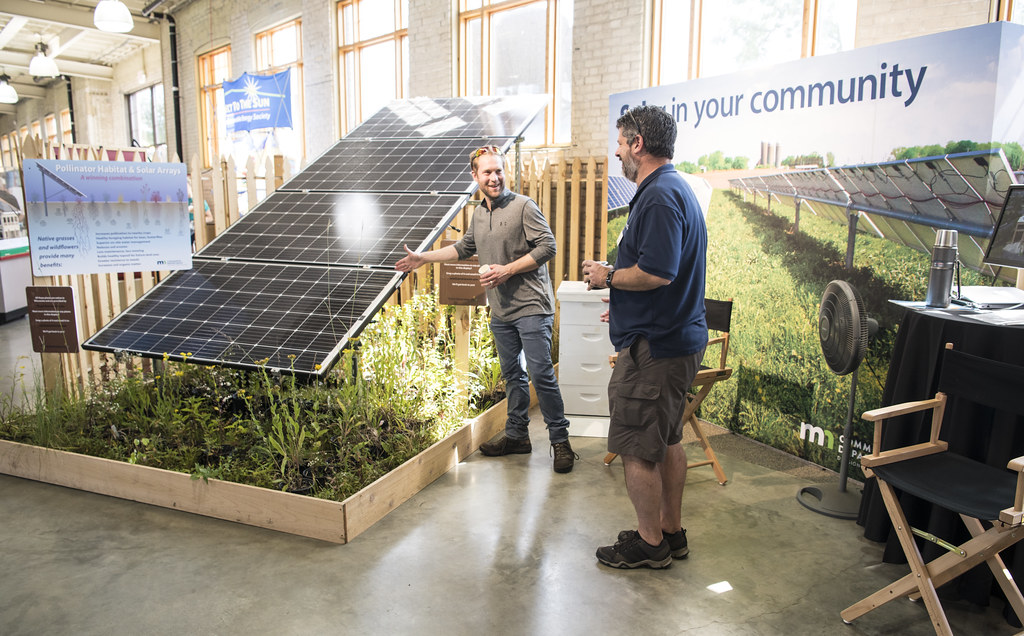“Solar can be a net benefit in terms of restoring a native habitat and improving ecosystem services, like storm water control and carbon storage and sequestration.”
.
In the summer of 2020, District Councillors unanimously approved a new solar farm on land to the south of Rockbeare Hill in Marsh Green – but with reservations:
“Food production, although it’s nice good land, there’s many more opportunities for food production than there are suitable places for solar sites. Personally, I’m not in favour of the industrialisation of the countryside and this is, I consider this sort of an industrialisation and urbanisation, but when you look at environmental concerns and the carbon neutral targets and considerations, I will be supporting it.”
Giant solar farm plans for East Devon countryside approved | devonlive.com
In the spring of this year, the Mail and the Devon Campaign to Protect Rural England looked at the environmental costs of large scale solar farms:
JOHN NETTLES PRESENTS DEVON CPRE’S ‘SAVE OUR FIELDS FROM SOLAR FARMS’ CAMPAIGN. | youtube.com
At the time, these news pages looked at the issues in quite some detail:
There is another solar farm looking for planning permission in East Devon:
Most of the public comments have been objections, many of which are based on ‘damage to the environment’:
We must preserve our heritage and wildlife . I totally understand the need for clean power , but I am sure this can be achieved without ruining our beautiful country.
The site provides habitat to several species of rare bats and birds. These are described as species of particular interest. We believe the proposal will damage this habitat.
The negative impact on the wildlife also causes me great concern, once we lose the wildlife from the area it will never return.
There will be a public meeting to consider the application on 21st January – at which LightRock Power will be presenting and explaining their planning application to the people of Payhembury parish and answering questions.
The developer is “working in partnership” nationally with the RSPB and claims to be “Bringing Renewable Energy And Wildlife Together”:
The question is, then, to what extent solar farms harm or are indeed of direct benefit to nature.
The Sid Valley Biodiversity Group’s social media pages reposted a piece from the Guardian recently:
Solar parks could be used to boost bumblebee numbers, study suggests | guardian.com

August 30, 2018 – Jordan Macknick visits the Prairie Restoration Inc booth at the Minnesota State Fair. The display helps fair-goers better understand the interconnected role that pollinator friendly solar systems have in our food system and highlights new trends in solar arrays as habitat for pollinators.(Photo by Dennis Schroeder / NREL)
Here are two recent reports from the United States which seems to support this:
Some solar operators are reimagining their facilities as prime protected habitats for native plants, bringing back key local species and potentially improving lands that humans have already disturbed. “Solar can be a net benefit in terms of restoring a native habitat and improving ecosystem services, like storm water control and carbon storage and sequestration,” said Leroy Walston, a landscape ecologist with Argonne National Laboratory who studies the relationship between renewable energy and the environment.
Solar farms are often bad for biodiversity — but they don’t have to be | vox.com
‘Farmers could identify unprofitable areas, such as low-yielding, highly erodible lands, as candidates for a pollinator-friendly solar farm. There’s the potential to increase their net income with pollinator incentive schemes.’
The solar farms that also boost wildlife | geographical.co.uk
A small woodland owner in the UK puts the case:
When we applied for permission to build a solar farm in West Sussex the planners initially worried about the impact on wildlife and insisted that we do surveys of the bats and newts, but in practice the solar panels, now installed there, have created a haven for wildlife. Several surprising facts struck me as I walked amongst the PV panels…
PV Panels and Solar Farms boost wildlife | woodlands.co.uk
.